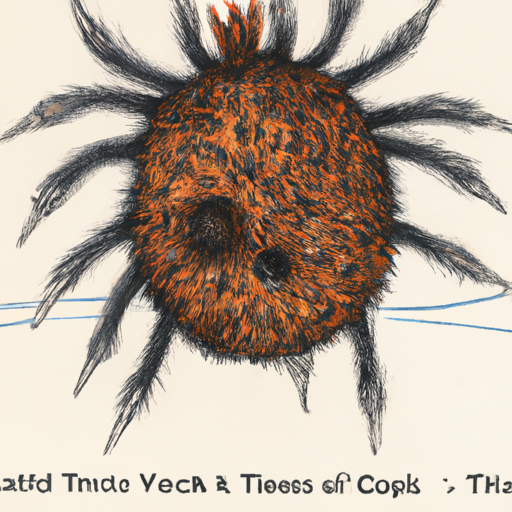1. Introduction
As a passionate dog owner, your pet’s health is undoubtedly of utmost importance to you. One common health issue you might have to deal with is ticks. Ticks are small, blood-sucking pests, and they can cause a variety of health complications for your furry friend. Understanding what ticks look like on dogs is the first step in protecting your pet from these harmful insects.
2. Identifying Ticks on Dogs
Ticks can vary in size, but they all share certain characteristics that you can look out for:
- Color: Ticks can range in color from a pale yellow to a deep brown or black.
- Shape: They have a flat, oval body shape prior to feeding. After feeding, they become engorged and might resemble a small grape.
- Size: Ticks can be as small as a pinhead or as large as a grape when engorged.
- Legs: They have eight legs with a unique harpoon-like structure at their mouth area, which they use to attach to the host.
You can usually find ticks in the warmer areas of your dog’s body, like the ears, armpits, and groin. They can also be found between the toes or under the collar.
| Small Tick | Engorged Tick | |
|---|---|---|
| Color | Pale yellow to deep brown | Darker colors |
| Shape | Flat, oval body | Resembles a small grape |
| Size | Pinhead | As large as a grape |
| Legs | Eight legs, harpoon-like structure near the mouth | Same |
3. The Danger of Ticks
Ticks are not just a nuisance; they can also transmit serious diseases to your dog such as:
- Lyme disease
- Ehrlichiosis
- Anaplasmosis
- Babesiosis
- Tick paralysis
These diseases can cause a range of symptoms, from mild discomfort to severe health issues and even death in extreme cases. Therefore, it’s crucial to regularly check your dog for ticks, especially after walks in wooded areas or tall grass.
4. How to Remove Ticks from Dogs
If you find a tick on your dog, you need to remove it as soon as possible to decrease the chance of disease transmission. Here are the steps to properly remove a tick:
- Protect your hands: Wear gloves to protect your hands from potential infection.
- Use a tick remover: This tool will help you to safely remove the tick without leaving the head embedded in your dog’s skin.
- Pull gently: Place the remover close to the skin, and pull gently upwards with steady hands. Do not twist or jerk the tick as this can leave the mouth parts embedded in your dog’s skin.
- Clean the area: After removing the tick, clean the area with soap and warm water, or apply an antiseptic to prevent infection.
5. Preventing Ticks on Dogs
To keep your dogs tick-free, you can:
- Regularly check your dogs for ticks, especially after they’ve been outside.
- Keep your yard clean and free of tall grass or brush where ticks can hide.
- Use tick preventive products. Your vet can recommend a suitable one.
FAQ’s
Q: How can I tell if my dog has ticks?
A: In addition to physically seeing the tick on your dog, other signs can include your dog scratching or biting at one area, head shaking if the tick is in the ear, or even a small bump you can feel when petting them.
Q: Can ticks jump from dogs to humans?
A: No, ticks can’t jump or fly. They generally crawl onto hosts from tall grass or shrubs.
Q: How long does a tick need to be attached to transmit disease?
A: It depends on the disease. For Lyme disease, a tick usually needs to be attached for 36 to 48 hours.
Remember, vigilance is key when it comes to ticks. Regular checks, prompt removal, and preventive measures will greatly reduce the risk of your dog contracting a tick-borne disease. As a responsible and loving caregiver to your pet, understanding what ticks look like on dogs is a crucial part of ensuring their health and happiness.



